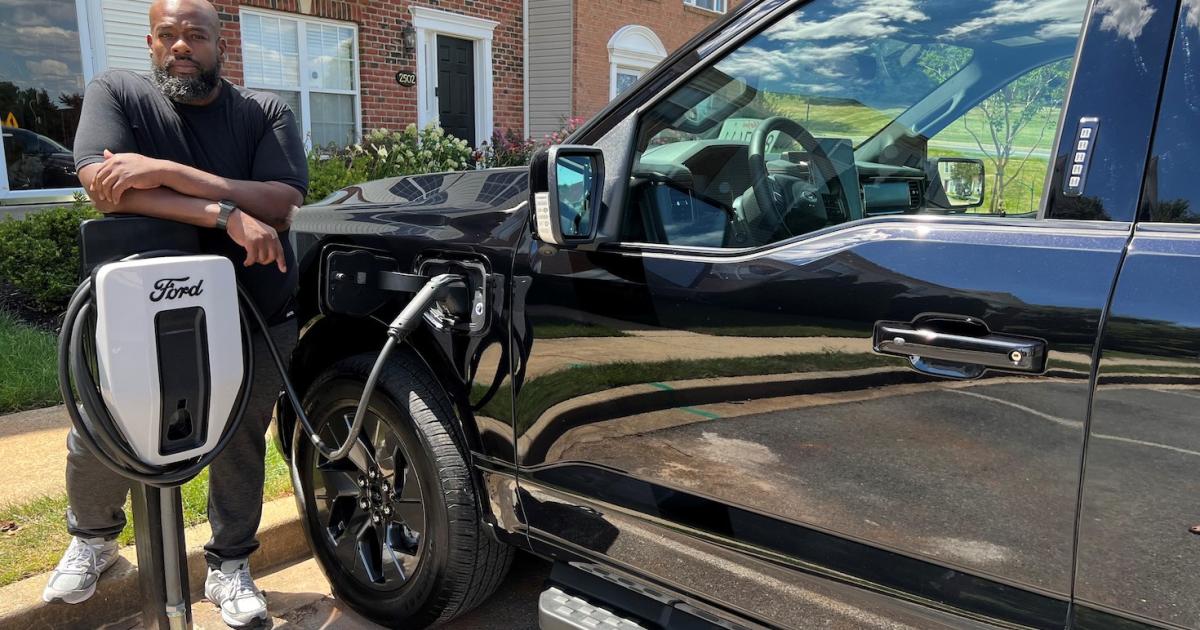
Electric vehicles are building market share across the United States in places such as California, Florida, New York, Texas and Washington state. At the same time, the country’s aging electrical grid appears increasingly unable to handle the rising demand for charging services during peak load times.
Bidirectional charging through vehicle-to-grid (V2G) technology represents at least a partial solution to this dilemma, according to Katherine Stainken, vice president of policy for The Electrification Coalition, which recently published a report of policy recommendations regarding advancing V2G adoption. By enabling EVs with these capabilities, fleet managers can collaborate with local utilities on demand response and position their EV fleets as a potential source of backup power during outages.
“Now really is the time to be thinking about how we can take advantage of the benefits of electric vehicles in terms of providing that benefit back to the grid through bidirectional charging. And we’ve seen some pilots so far, but we definitely want to be talking today about how we can take the lessons learned from those pilot programs and scale up very quickly and especially for some commercial fleets,” said Stainken during a virtual breakout session last week at VERGE Electrify.
Stainken moderated a fast-paced discussion that touched upon upscaling V2G adoption, featuring Frank Brown, design strategy director for D-Ford, the design division within Ford Motor Company; Cliff Fietzek, chief technology officer for InCharge Energy; and Sunil Chihaya, senior technical executive, EV-energy system integration for Electric Power Research Institute (EPRI).
Enhancing resiliency with V2G
One of the most promising aspects of V2G technology is the potential for enhancing resiliency by acting as the conduit for a potential backup source of power for the grid, according to the panelists. This presents multiple advantages. Not only is resiliency itself a tangible benefit, but the relatively easy implementation of this approach could serve to accelerate overall uptake of V2G technology, according to Chihaya.
“It looks like the early use case is getting a lot of prominence. I think the reason for that is that it’s the simpler thing to do. And the benefits are very tangible … when there’s an outage, you have electricity. In addition to that, you can use the vehicle battery very infrequently because the outages thankfully are not very frequent, which means that there are no battery impacts from discharging the batteries frequently, et cetera. But at the same time, you don’t have to have a dedicated energy storage system installed at the customer’s home, which is a significant expense and hassle,” Chihaya said.
Bidirectional charging is already being incorporated into EVs at the consumer level. A notable example is the Ford F-150 Lightning, the electrified manifestation of the iconic gas-powered F-150, which is far and away the most popular pickup truck in America. With the F-150 Lightning, Ford incorporated bidirectional EV capabilities to enhance its utility, Brown said.
“With the F-150 Lightning, we like to say it’s a truck that does truck things. And it has not been compromised in any way; in fact, it’s enhanced. It’s a massive mobile energy source, and we’ve already seen that. And what stands out to me is a lot of our truck customers might live in areas where the aging infrastructure is actually a challenge. I’m here in Michigan, and we had a storm earlier in the week that [knocked power out] for 50,000 customers. And so, I think it’s just kind of the tip of the iceberg of what the potential is here for these vehicles,” Brown said.
The transition to wider adoption of V2G is being hampered by proprietary communication protocols, according to Fietzek, but this dilemma could be addressed by DC bidirectional transmission technologies.
“Most of the OEMs are focusing on DC bidirectional, which allows on the vehicle side mostly software updates … You don’t need significant hardware changes because all of the hardware change, which is moving DC energy to AC energy feeding back in the grid, is in the home charger,” Fietzek said.
Developing a bidirectional and V2G market
While V2G presents tremendous promise for enhanced resiliency, the market for building on the benefits of bidirectional transmission is still evolving, according to Chihaya.
“Customers not only need to see perceived value, but tangible value. If you are able to supplant or substitute for a stationary battery with the vehicle’s battery, you can see a direct correlation between them. So, when you get a resilience use case, it is a very tangible thing. But once you start looking at sending power back to the grid … the question is how do you quantify, and how do you create a market? It is still happening,” Chihaya said.
Another challenge lies in aligning bidirectional transmission with existing grid services, Fietzek said.
“The electricity market still needs to do everything which is local, which is your transformer, which is your home, which is your job site, which is your building … and I think this is where the industry needs support, because no charger company will be able to build different applications for 3,000 utilities in the U.S. So, we really need to have a market which is similar, if not the same, from the East Coast to the West Coast,” Fietzek said.
This process is further challenged due to the uncertainty of future demand, according to Brown. While commercial customers have really good telematics, the marketplace around related utility demand across an entire fleet is still not well understood.
Nonetheless, the panel agreed on the potential for enhanced resiliency through bidirectional charging and V2G. The key is to engage in dialogue with key players such as fleet managers to ensure that the buildout includes the proper infrastructure, along with future-proofing technology as much as possible.
“Let’s get into a dialogue; let’s talk early because that helps to build the right infrastructure,” Fietzek said.
The post "The case for bidirectional EV charging is growing stronger" appeared first on Green Biz







0 Comments